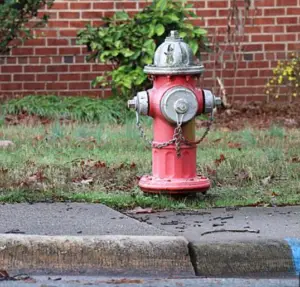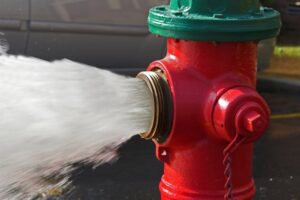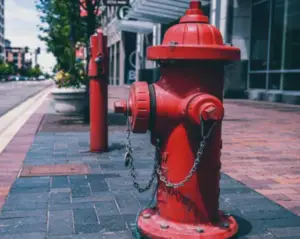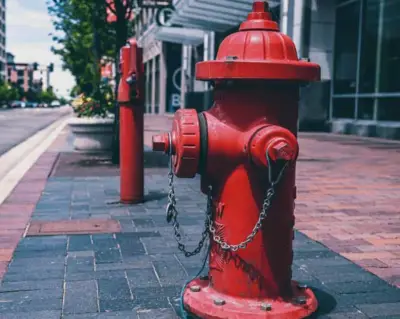In this article on how much does a fire hydrant cost, we’ll explore the average cost of purchasing and installing a fire hydrant, as well as the factors that can affect the price and the potential cost savings of purchasing a used or refurbished fire hydrant. We’ll also discuss the availability of financing options and the potential cost of not having a fire hydrant in a high-risk area.
On average, the cost of purchasing and installing a fire hydrant can range from $2,000 to $4,000. However, this price can increase significantly depending on the specific requirements of the location, such as the need for specialized equipment or a large water supply system.
However, the cost of a fire hydrant can vary depending on a number of factors, such as the type and size of the hydrant, the material it is made from, and the cost of installation and maintenance. Additionally, the cost of maintaining and servicing a fire hydrant can vary depending on the frequency and type of maintenance required.
What is a fire hydrant?

A fire hydrant is a piece of equipment that provides a source of water for firefighters to use to combat fires. Fire hydrants are typically located on streets and other public areas, and they are connected to a water supply system that provides a large volume of water at high pressure.
Fire hydrants typically have a valve that can be opened to allow water to flow through a hose, which is used by firefighters to direct water onto the fire. Fire hydrants are an essential piece of equipment for firefighters, as they provide a critical source of water for fighting fires and protecting lives and property.
How much does a fire hydrant cost?
The cost of a fire hydrant can range from $2,000 to $4,000 on average, but this price can increase significantly depending on the specific factors mentioned above. It is best to consult with a professional to get a more accurate estimate for the cost of a fire hydrant for your specific situation.
There are several factors that can affect the cost of a fire hydrant, including the type and size of the hydrant, the material it is made from, and the cost of installation and maintenance.
Type and size of the hydrant
The type and size of the fire hydrant can affect the cost. There are different types of fire hydrants, such as dry-barrel hydrants, wet-barrel hydrants, and underground hydrants, and each type has its own unique features and benefits.
The size of the fire hydrant can also affect the cost, as larger hydrants can provide more water flow and pressure, which may be necessary for some situations.
1. Material of the hydrant
The material that the fire hydrant is made from can also affect the cost. Fire hydrants are typically made from cast iron, ductile iron, or stainless steel. Each material has its own unique properties, such as durability and corrosion resistance, and the cost of the fire hydrant can vary depending on the material used.
2. Cost of installation
The cost of installation and maintenance can also affect the price of a fire hydrant. The cost of installation can vary depending on the specific requirements of the location, such as the need for specialized equipment or a large water supply system.
Additionally, the cost of maintaining and servicing a fire hydrant can vary depending on the frequency and type of maintenance required. Regular maintenance is essential to ensure that the fire hydrant is in good working condition and able to provide an adequate supply of water in the event of a fire.
Types of fire hydrants

There are several types of fire hydrants, including dry-barrel hydrants, wet-barrel hydrants, and underground hydrants.
1. Dry-barrel hydrants are the most common type of fire hydrant. They are called “dry” because the water in the hydrant is not pressurized when the hydrant is closed. When the hydrant is opened, water flows into the barrel and pressurizes the system, allowing water to flow through the hose.
2. Wet-barrel hydrants are similar to dry-barrel hydrants, but the water in the hydrant is pressurized even when the hydrant is closed. This allows water to flow through the hose more quickly when the hydrant is opened.
3. Underground hydrants are designed to be installed below ground level, with only the top of the hydrant visible above the surface. These hydrants are often used in areas where space is limited, such as on city streets.
Each type of fire hydrant has its own unique features and benefits, and the best type for a particular situation will depend on the specific requirements of the location. It is best to consult with a professional to determine the best type of fire hydrant for your specific situation.
Recommended::
Can I paint the fire hydrant in my yard?
It is generally not recommended to paint a fire hydrant in your yard. Fire hydrants are typically painted with specific colors and markings to indicate the type and flow rate of the hydrant, and painting over these markings can make it difficult for firefighters to quickly and accurately identify the hydrant and determine its capabilities.
Additionally, painting a fire hydrant can interfere with its operation, as paint can clog the valves and other moving parts, making it difficult to open and close the hydrant. It is best to leave the fire hydrant in its original condition and let the professionals handle any necessary maintenance or repairs.
How much does it cost to install a dry hydrant?
The cost of installing a dry hydrant can vary depending on a number of factors, such as the type and size of the hydrant, the material it is made from, and the specific requirements of the installation site. On average, the cost of purchasing and installing a dry hydrant can range from $2,000 to $4,000.
However, this price can increase significantly depending on the specific requirements of the installation site, such as the need for specialized equipment or a large water supply system.
Factors that can affect the price of a fire hydrant

The price of fire hydrant is not cheap at all, and that is because of some factors. Here are several factors that can affect the cost of a fire hydrant, including:
1. The type and size of the hydrant:
The type and size of the fire hydrant can affect the cost. There are different types of fire hydrants, such as dry-barrel hydrants, wet-barrel hydrants, and underground hydrants, and each type has its own unique features and benefits.
The size of the fire hydrant can also affect the cost, as larger hydrants can provide more water flow and pressure, which may be necessary for some situations.
2. The material the hydrant is made from:
The material that the fire hydrant is made from can also affect the cost. Fire hydrants are typically made from cast iron, ductile iron, or stainless steel. Each material has its own unique properties, such as durability and corrosion resistance, and the cost of the fire hydrant can vary depending on the material used.
3. The cost of installation:
The cost of installation can vary depending on the specific requirements of the location, such as the need for specialized equipment or a large water supply system.
The cost of installing a fire hydrant includes the cost of excavating and preparing the site, installing the hydrant and connecting it to the water supply system, and testing and commissioning the hydrant to ensure that it is in good working order.
4. The cost of maintenance:
The cost of maintaining and servicing a fire hydrant can vary depending on the frequency and type of maintenance required. Regular maintenance is essential to ensure that the fire hydrant is in good working condition and able to provide an adequate supply of water in the event of a fire.
Conclusion
Getting to know how much does a fire hydrant cost is a good thing. It is important to consult with a professional to get a more accurate estimate for the cost of a fire hydrant for your specific situation. The cost of a fire hydrant may seem high, but it is a small price to pay for the protection and peace of mind that a reliable source of water can provide in the event of a fire.


